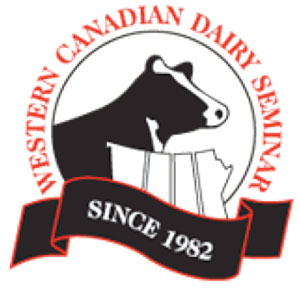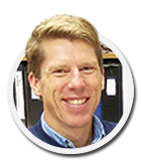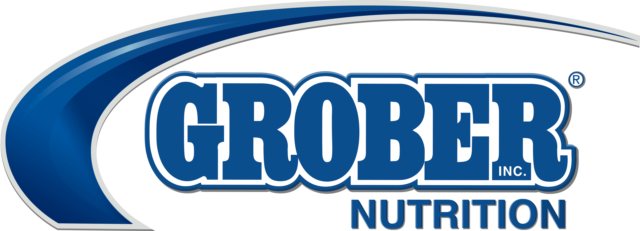Designed for people who want to improve their knowledge and decision-making abilities in dairy production and management, the 30th Western Canadian Dairy Seminar welcomes dairy producers, extension specialists, researchers, and dairy service and supply representatives. Each year a wide variety of topics are presented ranging from nutrition and reproduction to dairy policy and challenges facing the dairy industry.
This year’s event will be held March 6-9 at the Sheraton Red Deer in Red Deer, Alberta. With the theme, “30 Years of Advancing Dairy Knowledge,” the seminar will take a special anniversary look back at the last 30 years and how far the industry has advanced.

The week begins with a pre-conference tour of three local dairy farms, two pre-conference workshops geared towards dairy producers and a pre-conference symposium for nutritionists.
Seminar sessions throughout the week include reproduction; finance, management and economics; management: calves to cows; nutrition; dairy health; and dairy production and the environment.
Further details are available on the website, www.wcds.ca. For additional conference information contact Joanne Morrison, conference coordinator, at wcds@ales.ualberta.ca or (780) 492-3236.
To kick-off the seminars on Wednesday, March 7, four speakers will present a 30-year perspective on dairying. Three of those speakers highlight some of the advances made in the last 30 years below.
The fourth speaker, Normand St-Pierre from the Ohio State University, could not be reached for his comments.
Highlights of the past and a look into the future of dairy nutrition
 Mike Hutjens
Mike Hutjens
University of Illinois
Q: What is the single largest change you’ve witnessed in your field in the last 30 years?
Hutjens: I am selecting computer applications in ration balancing. I started out with a dial-up, card-based telephone system from Michigan State University generating six values. (A busy signal was the kiss of death at meetings.)
Moving along, this advanced from Texas Instrument 59 to Badger Balances and Minnesota Ration Builder to Spartan I to CMP and Spartan III.
These improvements allow equations and modules to accurately estimate rumen function, dry matter intake, shifts in fiber digestibility, predict rumen pH, estimate MUN, and suggest digestive tract dynamics. Cows responded to the computer-predicted nutrient changes.
Q: How has it impacted dairy farms today and those of the future?
Hutjens: Computer-based rations increase profits by reducing feed costs while building milk yield and components.
The ration models also challenged researchers to find answers to needed information (for example, starch fermentability and functional NDF). Balancing for amino acids is similar to hog and poultry rations.
In the future, we will build rations to reduce environmental risks (water and air pollution), deliver the consumer demanded nutrients they want to buy (for example, CLA fatty acids), and move away from cereal grains and soy protein diets as the demand for food continues as the world population grows.
Highlights of the past and a look into the future of dairy reproduction

Matt Lucy
University of Missouri
Q: What is the single largest change you’ve witnessed in your field in the last 30 years?
LUCY: The biggest change is that we moved from managing the reproduction of individual cows to managing the reproduction of entire herds.
When we worked with individual cows, we watched for signs of estrus and inseminated cows when they came into estrus.
The small number of cows that were never inseminated or never became pregnant were checked by the vet and treated. This worked well for small dairies and continues to work well for small dairies. As herd sizes grew, we started to manage the reproduction of entire herds.
Herd-level management includes reproductive programs that are applied to all cows and are designed to achieve specific goals or targets for reproduction.
Modern reproductive programs typically involve timed A.I., early pregnancy diagnosis, and resynchronization (open cows), but there are many different approaches producers use to achieve their goals. The important thing is that there is a workable program in place and that all cows follow the program.
Q: How has it impacted dairy farms today and those of the future?
LUCY: The impact of this management change is that it has allowed dairy farms to grow larger and at the same time be sustainable in terms of reproduction.
Attempting to manage reproduction on individual cows within a large dairy typically does not work because there are too many cows. A whole-herd program needs to be in place that can efficiently manage the reproduction of a large number of cows and achieve predetermined targets for herd reproduction.
Agriculture, food and society – philosophy to nanotechnology

Paul Thompson
Michigan State University
Q: What is the single largest change you’ve witnessed in your field in the last 30 years?
THOMPSON: What has happened over the last 30 years is that a rift in the expectations people have for agriculture has become increasingly obvious.
Two hundred years ago, everyone assumed that agriculture was culturally and environmentally significant in ways that commerce and manufacturing were not, and their expectations of farmers reflected that.
Farmers were producing a national and local landscape and culture (or social identity) as much as they were producing food, but there was no economic tension between these two roles.
Over the 20th century many people (including many inside farming) got comfortable with the idea that farming is just another sector of our industrial economy, and that it should be evaluated the same way we evaluate mining or manufacturing (e.g. jobs, productivity and pollution).
Q: How has it impacted dairy farms today and those of the future?
THOMPSON: It has affected dairy producers by creating a choice for the individual dairyman: Do you want to be a commodity producer, or do you want to be an amenity producer?
If it’s the latter, certain technologies may be inconsistent with societal expectations. And for the industry, can we (and should we) structure ourselves so that both models of what a dairy does for society can coexist? PD









